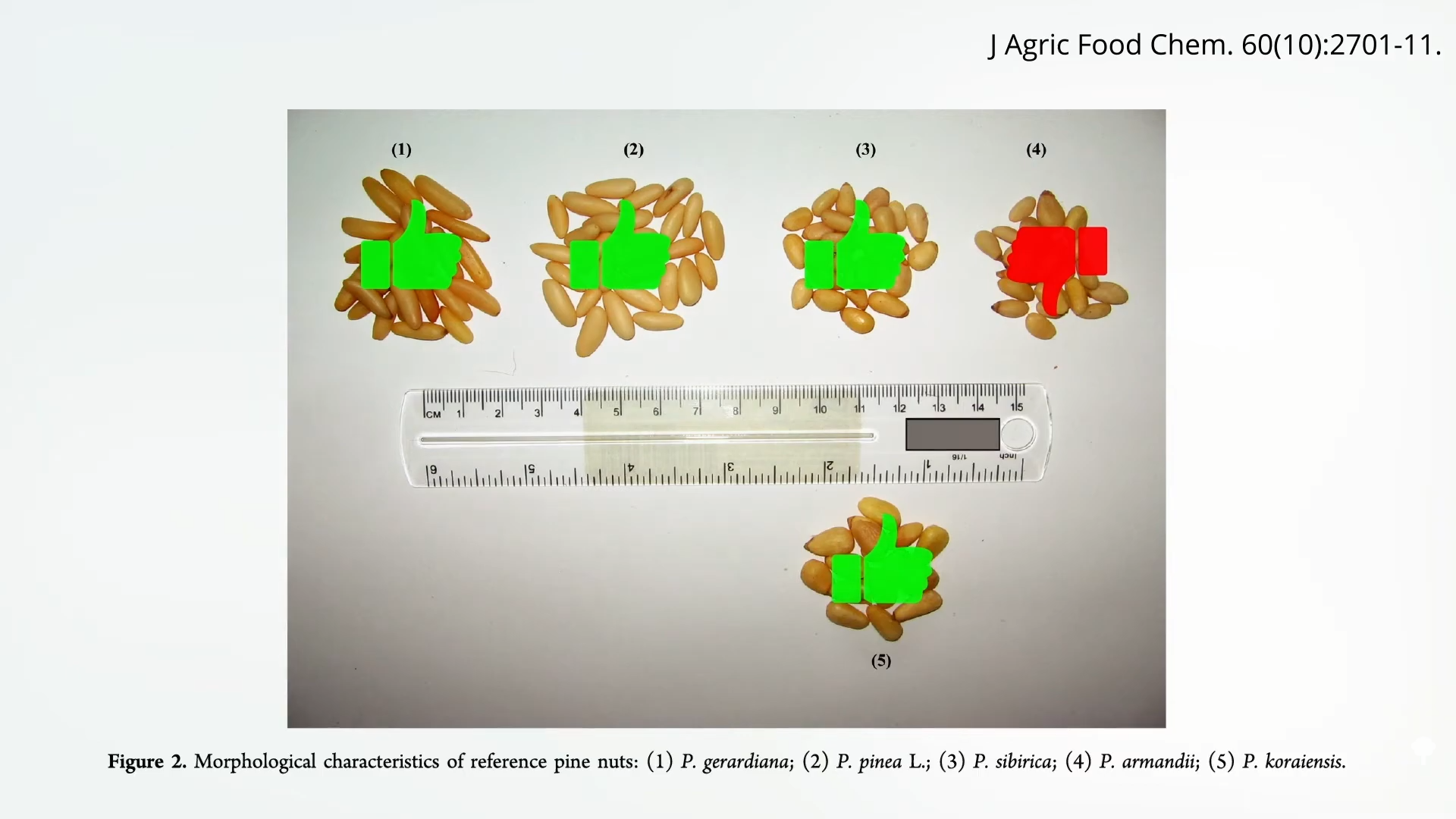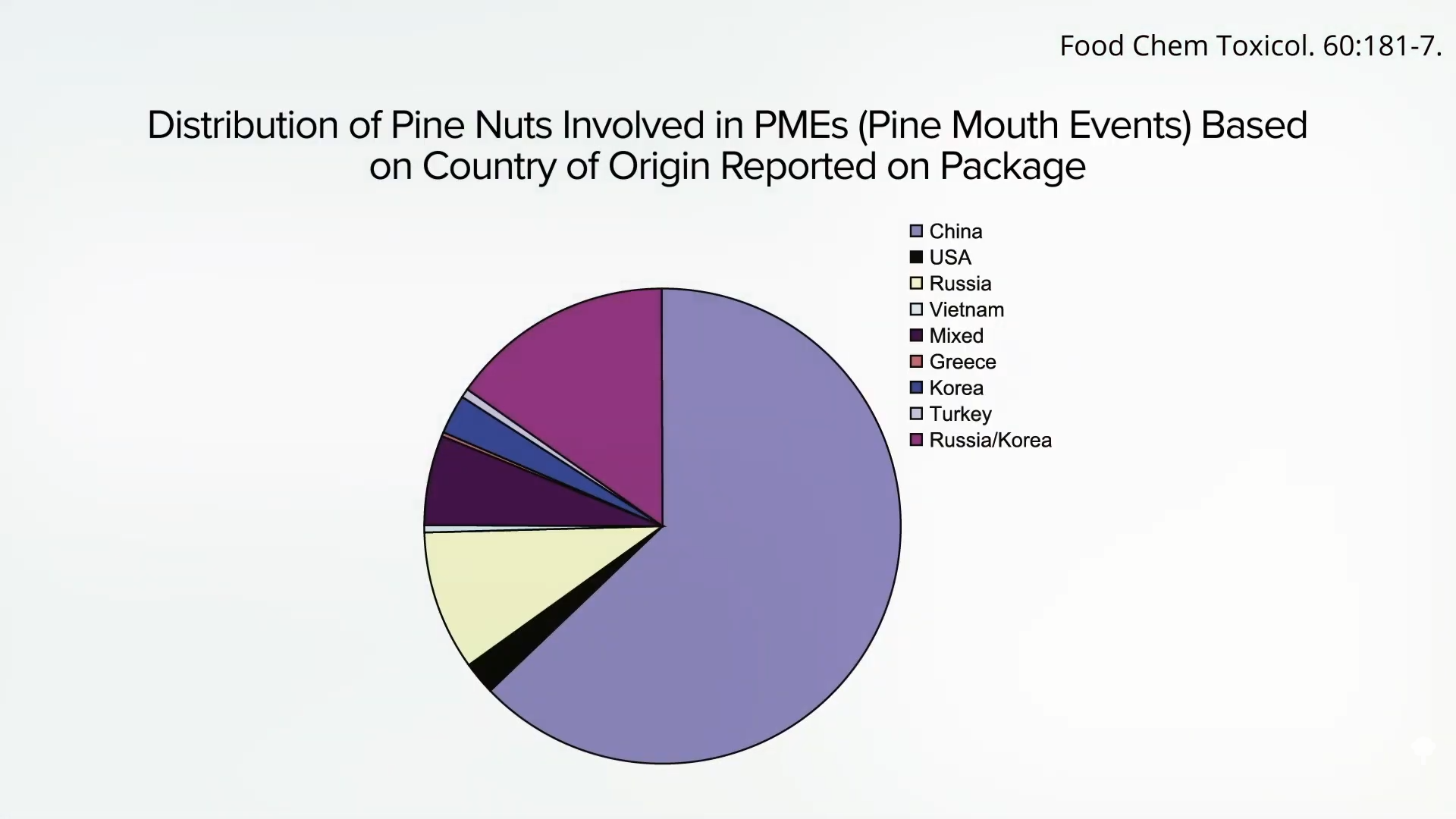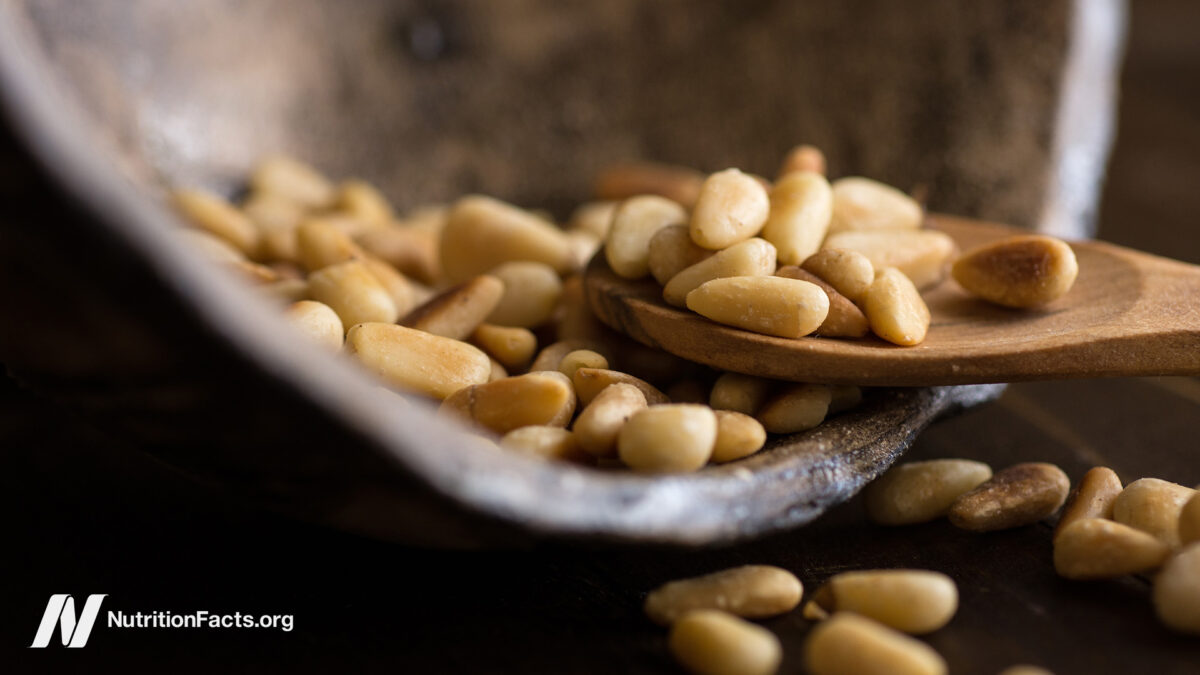Why do some pine nuts cause a bad taste in your mouth that can last for weeks?
The reason I make pesto with walnuts instead of the more traditional pine nuts isn’t only because walnuts are probably healthier with 20 times more polyphenols, but also because of a mysterious phenomenon known as PMS. Not that PMS. Pine mouth syndrome is characterized by what has become my favorite word of the week: cacogeusia, meaning a bad taste in your mouth. You can get cacogeusia from heavy metal toxicity, seafood toxins, certain nutritional and neurologic disorders, or the wrong kind of pine nuts. “Termed ‘Pine Mouth’ by the public, cases present in a roughly similar fashion: a persistent metallic or bitter taste beginning 1–3 days following ingestion of pine nuts lasting for up to 2 weeks.”
As I discuss in my video Pine Mouth Syndrome: Prolonged Bitter Taste from Certain Pine Nuts, thousands of cases have been reported, and it doesn’t seem to matter if the pine nuts are raw or cooked. Could the cause be an unidentified toxin present in some varieties of non-edible pine nuts? Indeed, “out of more than 100 species of the Pinus genus, [only] 30 are considered to be edible by the Food and Agriculture Organisation of the United Nations.”
Researchers analyzed pine nut samples from consumers who had fallen ill and found that, indeed, they all contained nuts from Chinese white pine, which is not reported to be edible. That tree is typically used only for lumber. You can see photos of inedible and edible pine nuts below and at 1:36 in my video.
 More photos can be seen here and at 1:40.
More photos can be seen here and at 1:40.

We don’t know it’s the Chinese white pine nuts, though, until we put it to the test. Researchers gave study participants six to eight Chinese white pine nuts. Most hadn’t ever heard of pine mouth syndrome, and they all developed symptoms. We still don’t know exactly what it is in those nuts that causes such a bizarre reaction. We know to stay away from those kinds of pine nuts.
So, what kinds of pine nuts are on shelves in the United States? All kinds, apparently, “including those associated with pine mouth.” You can see more examples below and at 2:19 in my video.
 Unsurprisingly, hundreds of cases of PMS have been reported in the United States. Most of the implicated nuts “were predominantly reported to be labeled from or originating from Asia, and in most cases China,” as seen here and at 2:30 in my video.
Unsurprisingly, hundreds of cases of PMS have been reported in the United States. Most of the implicated nuts “were predominantly reported to be labeled from or originating from Asia, and in most cases China,” as seen here and at 2:30 in my video.

The European Union demanded that China stop sending them toxic nuts, which they did beginning in 2011. “This export restriction likely resulted in a global export restriction of these species to the US as well,” given the decline in cases going into 2012, as shown below and at 2:47.
 Rare cases still occur, though, as evidenced by an active Facebook group entitled “Damn you, Pine Nuts.” The primary reason I made this video is to allay fears should this ever happen to you. “There are no proven therapies for PMS. The only treatment is to cease ingesting implicated nuts and to wait for symptoms to abate.” Thankfully, pine mouth syndrome appears to be benign and goes away on its own.
Rare cases still occur, though, as evidenced by an active Facebook group entitled “Damn you, Pine Nuts.” The primary reason I made this video is to allay fears should this ever happen to you. “There are no proven therapies for PMS. The only treatment is to cease ingesting implicated nuts and to wait for symptoms to abate.” Thankfully, pine mouth syndrome appears to be benign and goes away on its own.
